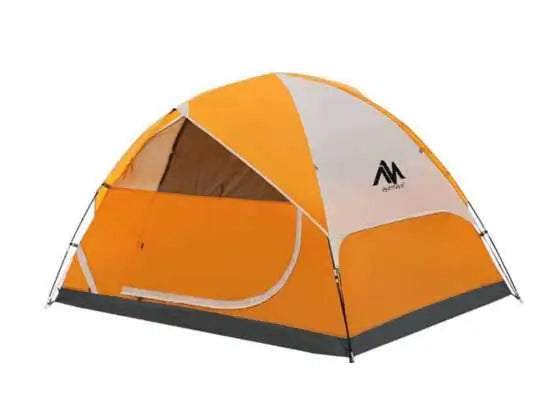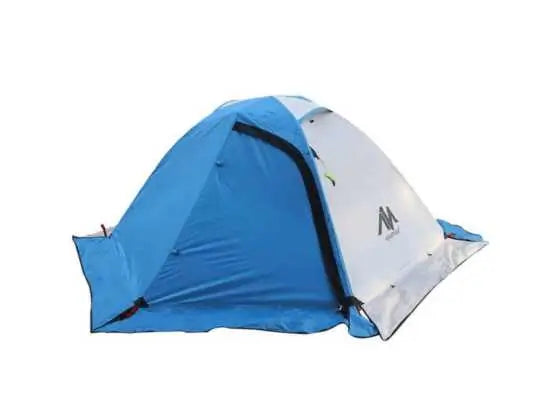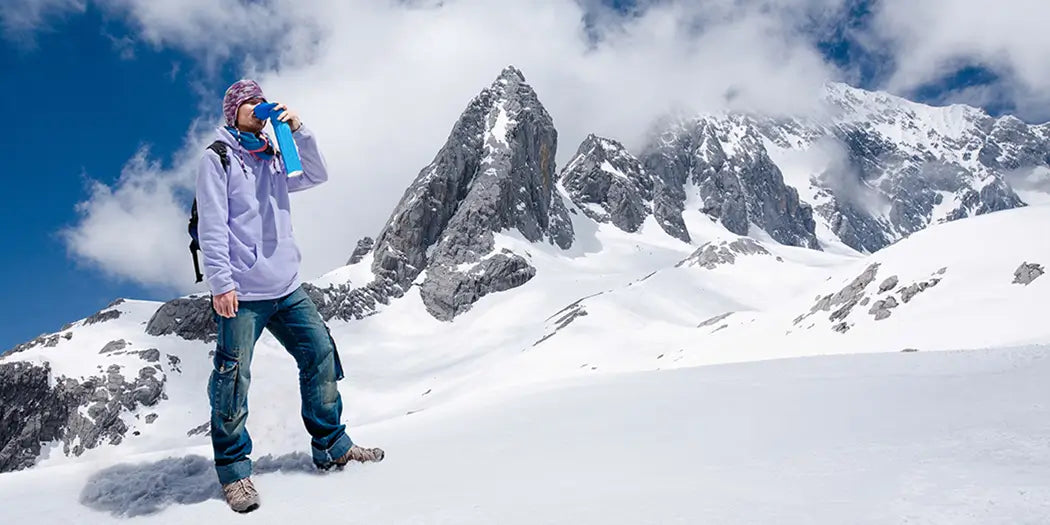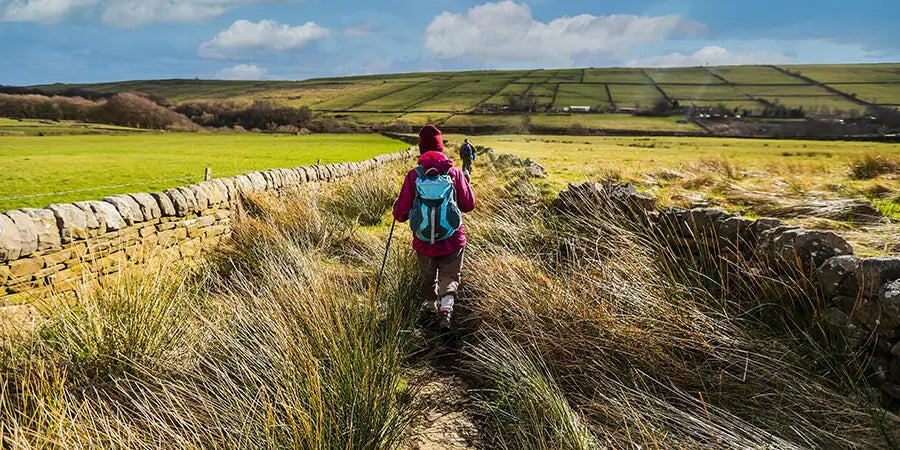Intro
Adjusting to high altitude is crucial for anyone visiting or moving to areas where the air is thinner. At higher elevations, the decreased oxygen levels can impact your health and overall experience. This guide provides practical tips on how to acclimate safely to high altitude, helping you avoid altitude sickness and enjoy your time in the mountains. We’ll cover everything from understanding the symptoms of altitude sickness to essential pre-trip preparations and effective acclimatization techniques. Whether you're hiking, climbing, or simply touring, these strategies will enhance your ability to adapt to the altitude changes effectively.

1. Understanding Altitude Sickness
Definition and Causes of Altitude Sickness
Altitude sickness, also known as acute mountain sickness (AMS), occurs when you cannot get enough oxygen from the air at high altitudes. This condition typically occurs above 2,500 meters (8,200 feet), though some are sensitive at lower heights. The primary cause of altitude sickness is ascending to a great height too quickly, which does not give the body enough time to adapt to reduced oxygen levels in the atmosphere.
Common Symptoms to Watch For
Recognizing the symptoms of altitude sickness early is key to managing the condition effectively. Common symptoms include:
- Headache
- Nausea and vomiting
- Dizziness
- Tiredness
- Loss of appetite
- Shortness of breath
- Difficulty sleeping
These symptoms can appear within a few hours after ascent and often intensify at night.
Differences between Acute Mountain Sickness (AMS), High Altitude Pulmonary Edema (HAPE), and High Altitude Cerebral Edema (HACE)
While AMS is the mildest form of altitude sickness, it's important to understand its more severe forms, which are less common but far more dangerous:
- Acute Mountain Sickness (AMS) is the most common form and is characterized by symptoms like headaches, nausea, and dizziness. It is generally the least severe form and can often be managed with basic interventions.
- High Altitude Pulmonary Edema (HAPE) involves fluid build-up in the lungs and can cause severe breathing difficulties. Symptoms include a persistent dry cough, fever, and shortness of breath even at rest. HAPE requires immediate descent and medical treatment.
- High Altitude Cerebral Edema (HACE) is the most severe form of altitude sickness and involves swelling of the brain. Symptoms include confusion, difficulty walking, and altered mental states. Like HAPE, HACE is potentially fatal and requires urgent descent and medical attention.
Understanding these conditions and their differences is crucial for anyone traveling to high altitudes, as early recognition and response can be lifesaving.

2. Pre-Trip Preparation
Importance of Fitness and Pre-Acclimatization
Preparing for a high-altitude trip starts long before you reach the mountains. Enhancing your physical fitness through cardiovascular training can significantly improve your body's ability to transport and utilize oxygen efficiently. Pre-acclimatization can also be beneficial, which involves exposing yourself to high-altitude conditions beforehand, either naturally by spending time at higher elevations or using an altitude training mask that simulates high-altitude conditions.
Dietary Adjustments and Hydration Tips
Diet also plays a critical role in preparing for altitude. Foods rich in carbohydrates can help maintain energy levels in high-altitude conditions, as they are easier to metabolize. It's also important to increase your iron intake, which can boost your body's ability to produce hemoglobin and improve oxygen transport. Hydration is equally crucial; dehydration can mimic or worsen the symptoms of altitude sickness. Aim to drink at least 3-4 liters of water per day, starting several days before your ascent. Avoiding or limiting diuretics like caffeine and alcohol can also help maintain hydration levels.
Packing Essentials for Altitude: Medication, Appropriate Clothing, and Gear
Packing appropriately can make a significant difference in your comfort and safety at high altitudes. Essential medications include Acetazolamide (Diamox) for preventing altitude sickness and anti-inflammatories for headaches. For clothing, layers are key; pack breathable, moisture-wicking base layers and insulated layers, along with a waterproof and windproof outer layer. Don't forget accessories like hats, gloves, and high-UV-protection sunglasses. Your gear should also include a quality sleeping bag rated for below-freezing temperatures, a sturdy pair of hiking boots, and a daypack equipped with essential survival and first aid items.

3. Gradual Acclimatization
The Rule of 'Climb High, Sleep Low'
One of the most effective strategies for adjusting to high altitude is following the rule of "climb high, sleep low." This principle involves ascending to higher altitudes during the day to expose your body to less oxygen, then descending to lower altitudes to sleep. This approach allows your body to experience higher elevations while still having recovery periods at lower elevations where the body can adjust more comfortably overnight.
Suggested Acclimatization Schedules
A gradual and sensible acclimatization schedule is crucial to prevent altitude sickness. Here’s a general guideline:
- Day 1-3: Spend these days at a moderate altitude (around 2,000-2,500 meters) and engage in light activity like walking or gentle hiking.
- Day 4-5: Increase your sleeping altitude to about 2,500-3,000 meters, with excursions to higher elevations during daytime activities.
- Day 6+: If you feel well, you can start sleeping at altitudes above 3,000 meters, progressively increasing your sleeping elevation every other night by no more than 500 meters.
These schedules can vary depending on the individual’s response to altitude, so flexibility is important.
The Importance of Listening to Your Body
Listening to your body is crucial when acclimatizing to high altitudes. Symptoms of altitude sickness can develop quickly and should not be ignored. If you feel overly fatigued, dizzy, or show any signs of altitude sickness, it is important to rest or descend to a lower altitude. Pushing through symptoms can lead to severe complications and should be avoided. Taking rest days, staying hydrated, and ensuring proper nutrition are all essential steps in listening to your body’s needs during acclimatization.

4. On-the-Spot Remedies
Immediate Actions to Alleviate Mild Altitude Sickness Symptoms
When symptoms of mild altitude sickness appear, immediate action can help alleviate discomfort and prevent more serious conditions. Here are a few steps:
- Rest: Reduce physical activity and rest until symptoms improve.
- Hydration: Increase fluid intake; water and electrolyte solutions are beneficial.
- Descend: If symptoms do not improve with rest and hydration, descending even a few hundred meters can make a significant difference.
When and How to Use Medications like Acetazolamide (Diamox)
Acetazolamide (Diamox) is a medication commonly used to prevent and reduce the severity of altitude sickness. It works by helping to speed up acclimatization. Here’s how to use it:
- Prevention: Diamox is usually taken before ascent to high altitude to prevent altitude sickness. The recommended dose is 125 mg twice daily starting 24 hours before ascent and continuing for at least 48 hours after reaching high altitude.
- Treatment: If symptoms occur, Diamox can be taken at the same dosage to help alleviate them. It’s important to consult with a healthcare provider before use, especially if you have pre-existing health conditions or are taking other medications.
Natural Remedies and Breathing Exercises
In addition to medical treatments, natural remedies and breathing exercises can also help manage symptoms:
- Ginger: Consuming ginger in various forms (tea, capsules, or raw) can help reduce nausea and improve digestion.
- Garlic: Garlic is believed to help increase oxygenation in the blood, useful at high altitudes.
- Breathing exercises: Practicing paced breathing can help increase oxygen intake and manage the symptoms of breathlessness. One method is the '4-7-8' technique, where you breathe in deeply for 4 seconds, hold your breath for 7 seconds, and exhale slowly for 8 seconds.

5. Knowing When to Descend
Recognizing Severe Symptoms of Altitude Sickness
It's crucial to know when symptoms of altitude sickness escalate from mild to severe, necessitating an immediate descent. Severe symptoms include:
- Persistent, severe headache that does not improve with medication or rest.
- Increased nausea and vomiting that leads to a significant loss of fluids and inability to retain food or drink.
- Marked breathlessness at rest or very slight exertion.
- Loss of coordination and balance (ataxia), which is a sign of High Altitude Cerebral Edema (HACE).
- Confusion, hallucinations, or changes in behavior, indicating possible brain swelling.
These symptoms require urgent attention and immediate descent to lower altitudes.
Safe Descent Practices
When descending due to altitude sickness, it’s important to do so safely to prevent accidents or worsening conditions:
- Descend gradually: If possible, descend gradually to allow your body to adjust without abrupt changes.
- Stay with others: Never descend alone; always ensure you are accompanied by someone who can assist in case your condition deteriorates.
- Keep warm: Maintain body warmth to prevent hypothermia, which can complicate altitude sickness.
The Importance of Having a Flexible Travel Plan
High-altitude adventures require flexible travel plans that allow for adjustments based on health and safety. It’s important to plan for additional days in your itinerary specifically for acclimatization or unexpected descents. Having the flexibility to change your route or delay your ascent can be crucial, especially when travel conditions or physical responses to altitude vary. Always prioritize safety over sticking to a fixed schedule.
Final Thoughts
Adjusting to high altitudes is an essential skill for any outdoor enthusiast venturing into mountainous areas. By understanding the risks and symptoms associated with altitude sickness and preparing adequately through fitness, diet, and proper acclimatization, you can enhance your ability to safely enjoy the breathtaking landscapes that high altitudes offer. Remember, the key to a successful high-altitude adventure lies in preparation, gradual acclimatization, and responding promptly to the signs your body gives you. Keep these tips in mind, and you'll be well on your way to making the most out of your high-altitude experiences, ensuring they are memorable for all the right reasons.
High-Altitude Areas in the US, Canada, and Mexico
United States
- Mount Whitney, California - The highest summit in the contiguous United States at 14,505 feet (4,421 meters).
- Colorado Rockies - Numerous peaks over 14,000 feet, including Mount Elbert, the highest point at 14,440 feet (4,401 meters).
- Mount Rainier, Washington - A notable peak in the Cascade Range, reaching 14,411 feet (4,392 meters).
Canada
- Mount Logan, Yukon - The highest peak in Canada, towering at 19,551 feet (5,959 meters).
- Mount Robson, British Columbia - The highest point in the Canadian Rockies at 12,972 feet (3,954 meters).
- Mont Tremblant, Quebec - Popular for skiing, its summit reaches 2,871 feet (875 meters), notable for its altitude in the region.
Mexico
- Pico de Orizaba (Citlaltépetl) - Mexico’s highest mountain at 18,491 feet (5,636 meters), located between Puebla and Veracruz.
- Popocatépetl - An active volcano and the second-highest peak in Mexico at 17,797 feet (5,426 meters).
- Nevado de Toluca - Near Mexico City, this peak reaches 15,354 feet (4,680 meters) and is popular among hikers.
These regions are renowned for their beauty and challenging terrains but also pose risks related to high altitude. Whether you're planning a rigorous climb or a casual visit, consider the altitude as a significant factor in your travel and preparation plans. Always check local conditions and advisories before heading out to ensure a safe and enjoyable experience.








